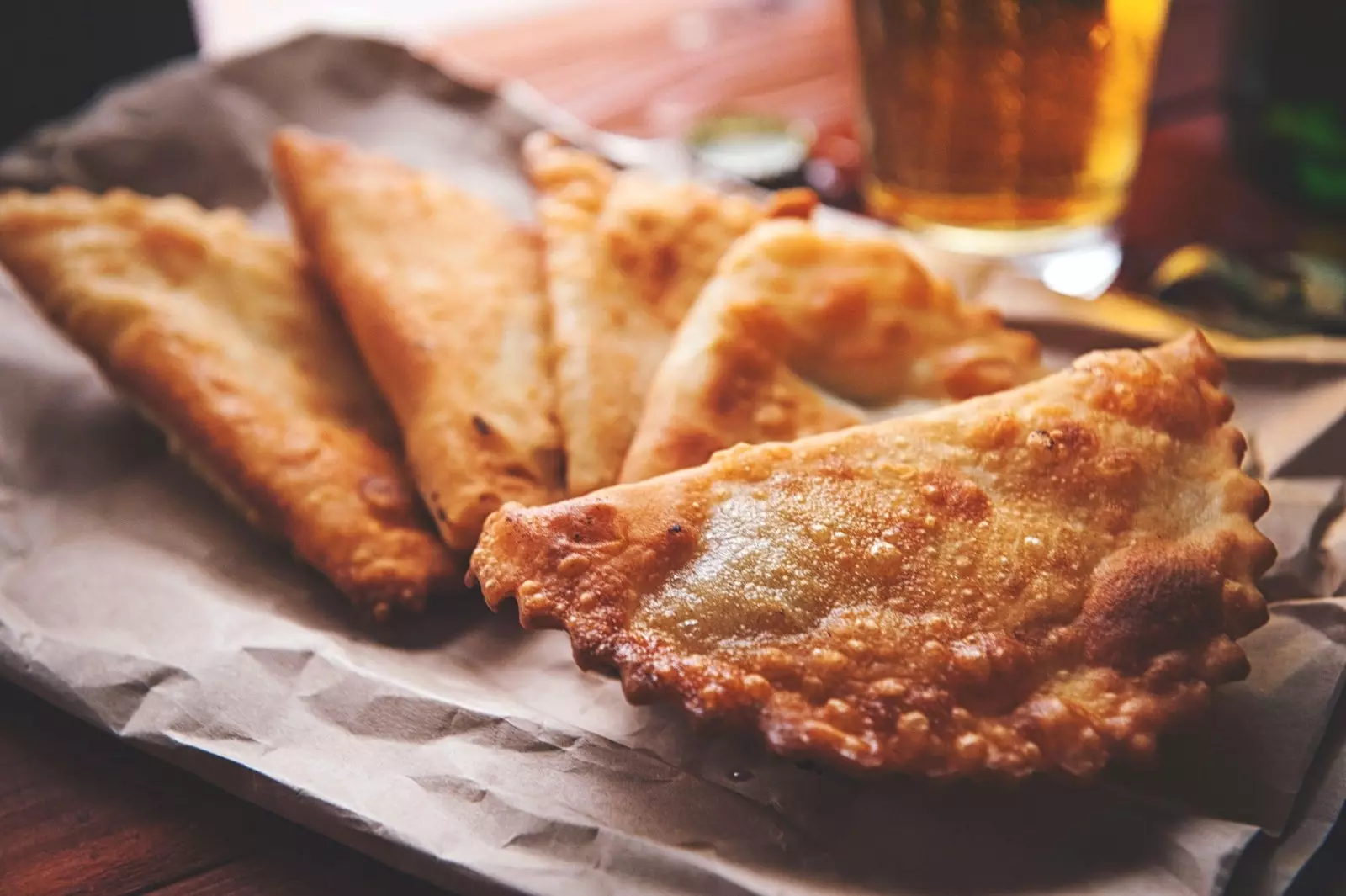
meat chebureki
Of all the possible translations that there may be for the concept of ryumochnaya , the most accurate is, in all probability, "trough" . The idea, at least in its origin, is the same, although the ryumochnaya is for humans and not for horses.
What does it consist of? For a habitually thirsty people, such as the Russians, it is better provide the drink under minimum health conditions (and temperature) that leave the victims of thirst quenching in the open with stagnant water in puddles.
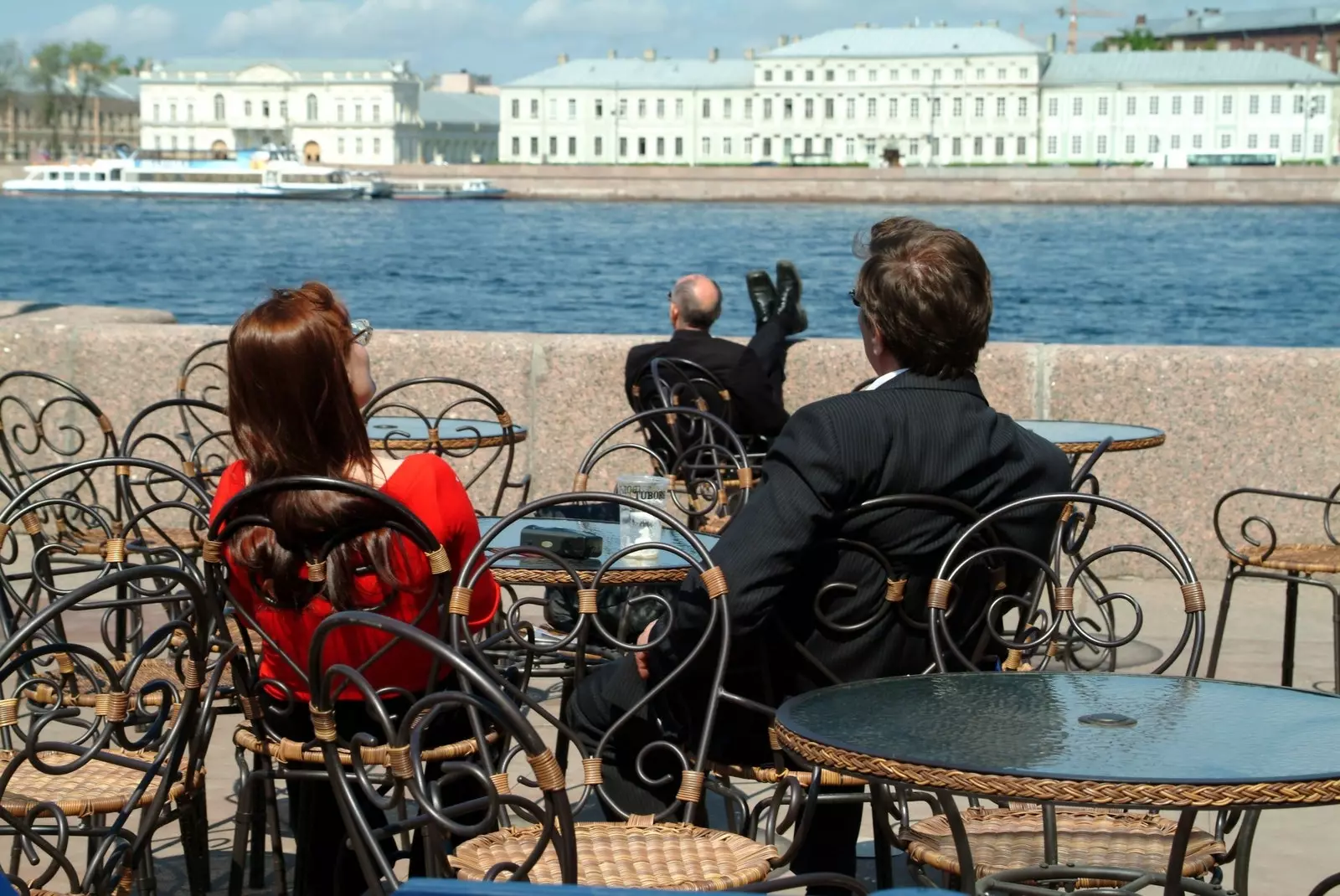
In Russia you don't go thirsty
That was more or less what went through his head. the Leningrad authorities towards the end of the Stalin era.
Given the restaurants and eating houses were not accessible to everyone and that is why people did not stop having a drink wherever they could (in the streets, the portals, the squares...), it was decided to open some small establishments in residential areas: the ryumochnayas.
Its creation, in series, was a revolution and gave rise to a new concept of hospitality and social relations. They are something like a McAuto (pardon the heresy) of vodka , a bar in which although you can stay until closing, it is more well thought out to "grab a quick one" and go home.
High tables without chairs, capacity for about 25 people and small cups or ryumkas (vodka for the more traditional and port for the intellectuals) pushed don't get too long on the way back home.
Many of these establishments offered, to accompany the drink, a small sandwich (or butterbrod) and then they were renamed buterbrodnayas.
Of course, in the end, as the writer Leonid Repin tells us, "glasses of vodka you wanted a few, but after four sandwiches you were fed up, so by the end of the night they were just forming towers of Pisa of sandwiches".
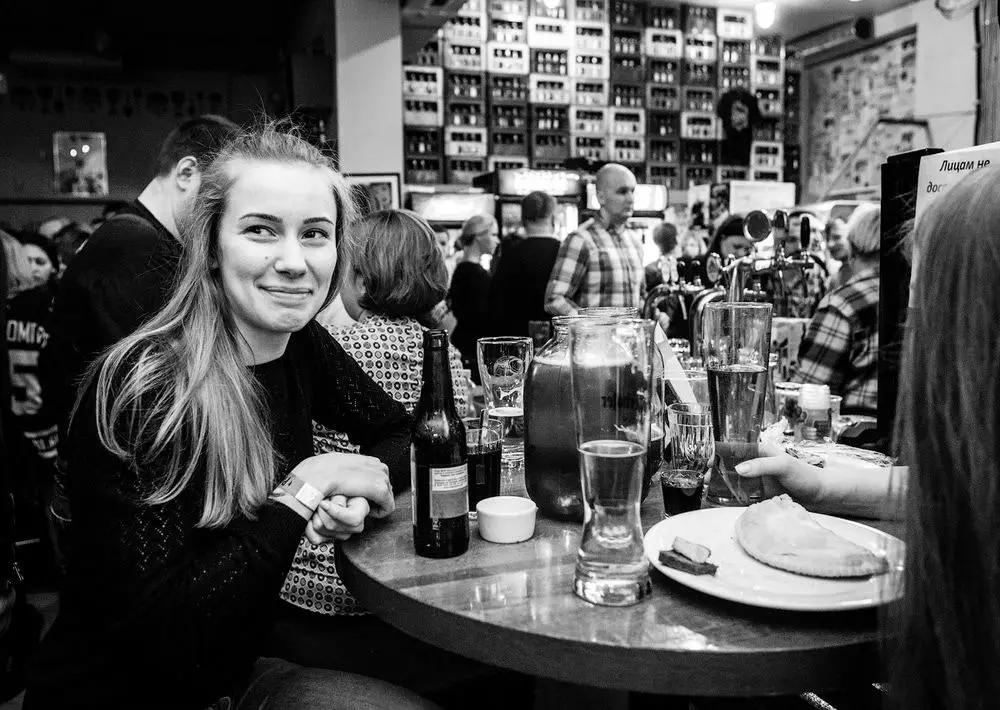
Moscow Ryumochnaya
In short, touches of color and nostalgia. What concerns us is to understand that ultimately it is about Soviet-style pubs and how they are today. The first difference from ryumochnayas originals is that very few still maintain the initial purpose of be accessible to all audiences.
Guilty? Yes, the dreaded gentrification. The wild prices of rents in the center of Moscow or St. Petersburg make that in the capital there are fundamentally five ryumochnayas that keep their prices intact next to the smell of salty pickles, pickled cabbage and smoked fish.
ZYUZINO
You have to go to the outskirts of Moscow to find LA Ryumochnaya with capital letters , the ryumochnaya of all ryumochnayas.
Is named Zyuzino and concentrates on preserving the spirit of those bar poets that during the 1970s gave these types of places an air of intellectuality and that, in a broader context, contributed to romanticize alcohol culture.
Apart from the impact on public health, without them it would be difficult to find places like this, with regular exhibitions, concerts and recitals as a context for a real Russian party. Its captain and standard-bearer, the singer Pyotr Mamonov, who performs less and less frequently.
The food and drinks are simple and typical of the Soviet culinary tradition If such a concept exists.
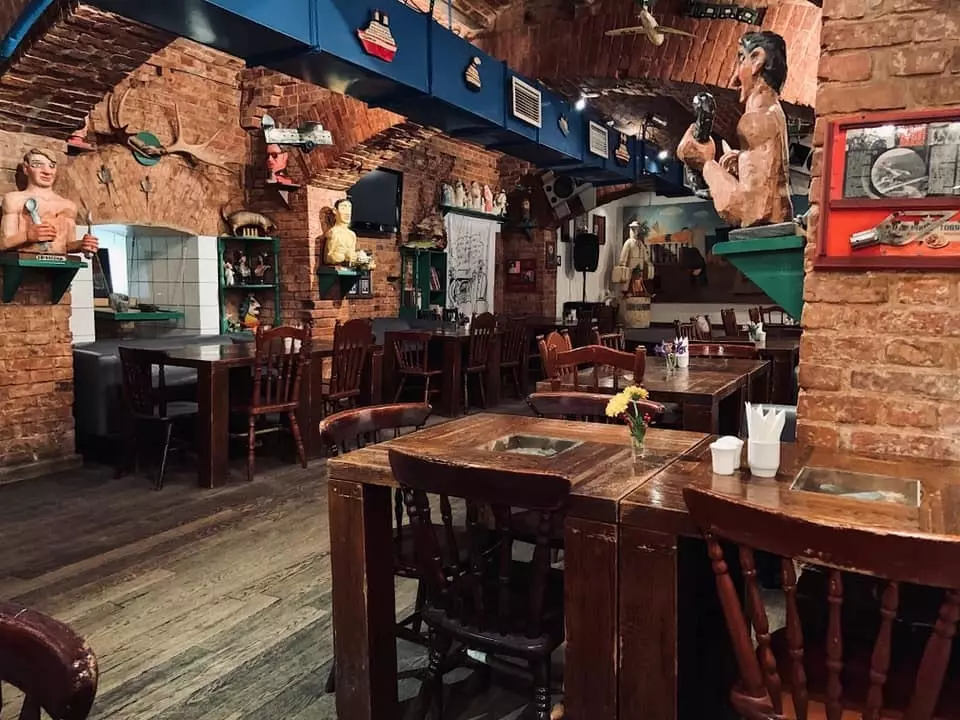
Petrovich Restaurant
PETROVICH
On the line is the Petrovich restaurant. Founded by foreigners in the 1990s, today it is a cult establishment for the generation that was growing up in that decade. The curious thing is that, of this clientele, only their bodies aged, because his clothes, his character and his mentality continue as before.
At a minimum, someone dressed in leather and a cowboy vest starts to sing a song by Anna Pugacheva and Vladimir Visotsky, celebrate Victory Day or kick off discuss Tolstoy. A mix between the intellectual and the vulgar that defines exactly what those years must have been like.
The menu is based on the same: marinated herring, stroganoff, pickled cucumbers and caviar with blinis. The humor of the decoration, with portraits and photos of all the historical personalities of the country, explain the name : all of them appear with their patronymic changed to the most typical possible, Petrovich: Lev Petrovich Tolstoy, Yuri Petrovich Gagarin, Vladimir Petrovich Lenin.. . which only affects the condition of this place as a genuine caricature of the local culture.
DRUZHBA
The intellectual airs of Zyuzino and Petrovich are blown away in the ryumochnaya Druzhba, that is left of nostalgia and romanticism to be preserved as in its origins; that is, in alcohol.
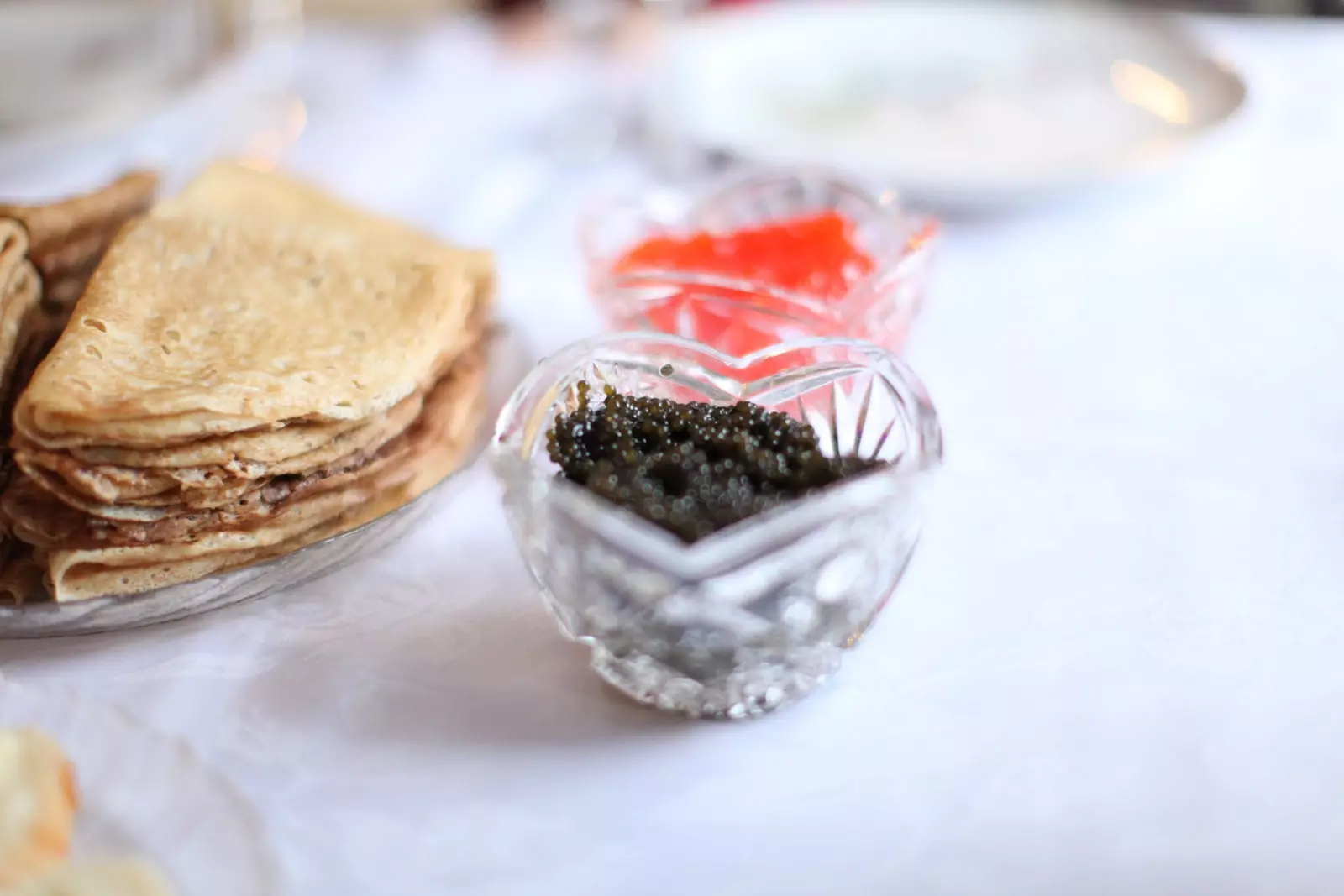
Caviar with blinis
In alcohol and oil , to be exact, because more than drinks, their specialty is chebureki - a deep fried dough, usually filled with fried meat highly processed. Its absorption capacity is the most effective for taste the different types of vodka at local speed. Located in the heart of the city, this establishment is a rare sight for its simplicity and familiarity.
CCCP
The name is a statement of intent. It is also defined as cheburechnaya, but his menu is more extensive and above all cheap, possibly one one of the cheapest in the city center.
Like many traditional ryumochnayas, CCCP's hours are daytime only and it offers very simple dishes under colorful portraits of Stalin, slogans of Lenin and small Komsomol flags.
It is a network of premises distributed throughout the Moscow center, usually in basements where no one goes if not with the intention of drink any norm of historical memory. The martial treatment of his staff is less funny, but still Soviet.
WHAT ARE NEORUMOCHNAYAS?
So far, the tradition. And from here, gentrification. The neoryumochnayas . After the wave of Chinese restaurants (some say that spring rolls and the sushi are typical Moscow food) and cocktail bars , the ryumochnayas re-emerge with a new face.
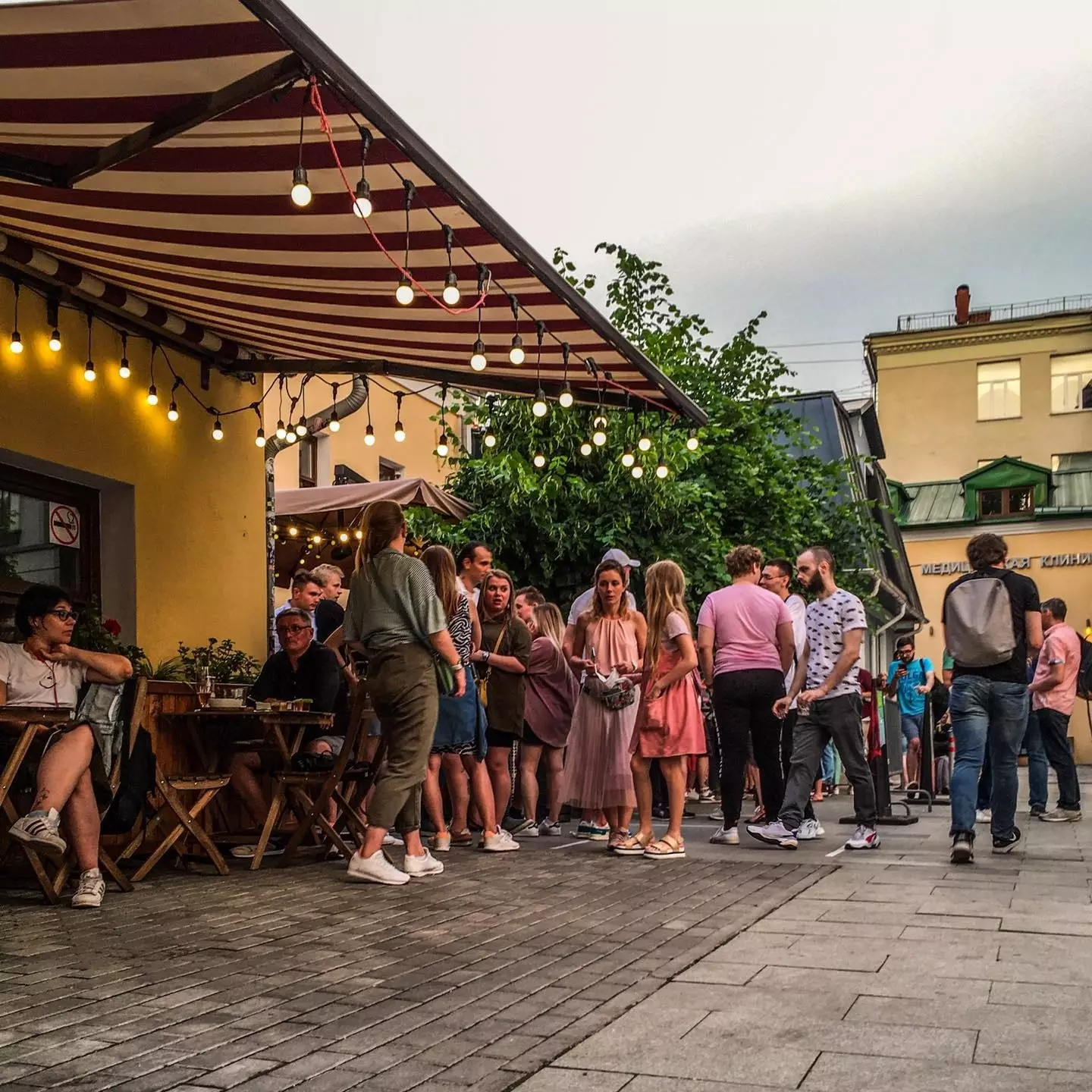
Shirokaya na Shirokuyu, on Krivokolieni Street
More and more people are reformulating the concept of their premises to combine the growing Soviet nostalgia with a more contemporary touch (and prices).
If the inspiration comes from places like those already mentioned, the component that really unifies them is the gastronomic culture that is based on them: typically Soviet appetizers such as sandwiches, herring, pickles or pielmeni (boiled and stuffed dough) and elaborated with presumed sophistication.
And to accompany the fashionable drink: nastoiki. Although it varies, its graduation is usually lower than that of vodka and there are all flavors, from chocolate and Hariboo or limoncello even the traditional fruits of the forest, coffee or apple.
ZINZIBER
It is one of the quintessential bars in the quintessential bar district of Moscow. It has three establishments (in Chisty Prudi, Novokuznetskaya and Arbatskaya, it is open 24 hours) and all three are full of characters that would only be possible to find in the Moscow-Petushki alcoholic odyssey , mostly young people who came attracted by the low prices and that they conquered it with a incombustible festive spirit.
Zinziber is a song to improvisation and the unexpected. The beer is just as awful as the toilets look, but cocktails, food and nastoikas keep the bar going crowded with thirsty Muscovites, who end up dancing on the tables and eating on the floor. Music is a plus: it is so feasible listen to Camela and Oasis, like Piazolla and Tchaikovsky.
SHIROKAYA NA SHIROKUYU
If it is to pay homage to the Moscow-Petushki poem , the indicated place is Shirokaya na Shirokuyu, on Krivokolieni street. Better known as the-serbian-bar-that-never-closes- , as well as being a good refuge when you are caught by surprise by a snowfall at night, it is also a good way to remember the cocktails invented by the hero Venichka Erofeev, protagonist of the poem Moscow-Petushkí and author of the most stroboscopic drinks.
Unfortunately, its ingredients are not recommended for humans (pure alcohol, antifreeze fluid, cologne, etc.), but in Shirokaya na Shirokuyu (meaning "from wide to wide") They pay him a good tribute with some nastoiki that take us to the spirit of this great work.
For that alone (and certainly not for the food) this place is worth a visit. Oh yes, and also for the nice terrace that enhances any summer afternoon.
SVOBODA
The opposite pole of what has been described so far and in this same Krivokolieni street -whose name, literally "crooked knee" , serves as a warning - is one of the most fashionable neoryumochayas in Moscow, Svoboda (freedom).
A contradictory name with its long tails, crowded bars and excessive hygiene for the expectations generated by a visit to the ryumochaya. Of course, its menu justifies the wait: pounded cucumbers are a delicacy and the nastoiki, the most dangerous.
MECHTI
On this golden mile Mechti takes the cake. From our last drink, she's a ten minute walk south, in the Kitai Gorod neighborhood and in the vicinity of one of the classic alleys of nocturnal perdition, the street of "The Smarties". Mechti perfectly defines the concept of neoryumochnaya, with very rich and original nastoiki.
Although minimal, the food options follow that line: typical Soviet tapas enhanced with somewhat more contemporary ingredients. The place, embedded in the ground floor of historic houses, overlooks one of the most lively squares in the city, where the public from the surrounding bars and restaurants converge.
as i said Vladimir Mayakovsky: "thirst is not quenched with juice." Let each one understand it as he wants, but these places can help to get closer to the spirit of his sentence, or, at least, to the spirit of this city that the poet understood so well with his verses.
